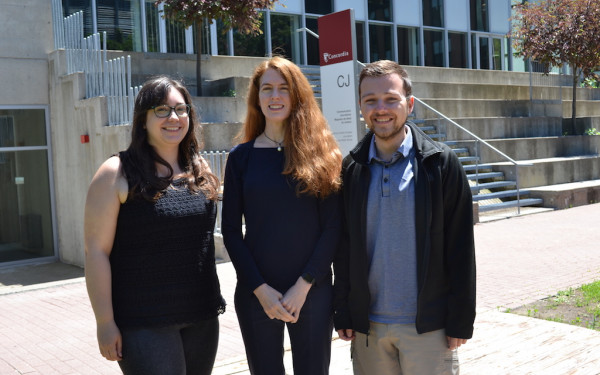Lenses BIG and small
Photojournalism From Local to Global in Old Montreal
World Press Photo, the most prestigious international press photography contest, is back in town, bringing with it powerful images of newsworthy events across the world.
“[World Press Photo] brings together some of the most powerful images of world events from 2011,” said Matthieu Rytz, whose company, Productions Foton, is hosting the event. “I think the images speak for themselves and serve to remind us that this is the world we live in.”
While the major stories of last year included the Arab Spring and the earthquake in Japan, the exhibit, which runs until Sept. 30 at the Bonsecours Market in Old Montreal, focuses on many other news items.
Shockingly violent images of the ongoing drug war in Mexico, public executions in Iran and the aftermath of last year’s killing spree in Norway are some of the major events from across the globe covered in the exhibit.
But it’s not all gloom and doom. There are award-winning images from Vietnam’s Hang Son Doong cave, believed to be the largest in the world, as well as a scene from Fashion Week in Dakar, urban sprawl in Moscow, Mexican lucha libre wrestling and the often-topless Ukrainian feminist freedom fighters FEMEN.
Apart from the main attraction, the exhibit also features two satellite exhibits on display, AnthropoGraphia, and Rouge2, both curated by Productions Foton. The former presents a series of 12 photo documentaries that seek to raise awareness of human rights through visual storytelling.
“The important thing with AnthropoGraphia is that we try to promote local photographers that are covering events in their own countries,” said Rytz. “For example, instead of sending a white Western male photojournalist to Bangladesh we try to promote a photographer from Bangladesh to cover the stories that happen in their country.”
One of the stories covered in the series is from Taslima Ahkter, a Bangladeshi photojournalist who documented the condition of women workers in her home country.
“She’s been involved in women’s rights over there, she speaks the same language and has access to things that a New York Times or National Geographic photographer who doesn’t speak a word of Bengali would have,” said Rytz.
“The world is changing very fast in terms of the media. The digital revolution and the Internet changes the whole landscape of journalism and photojournalism,” he continued.
“With a basic Internet connection and very little money you can cover events that are happening wherever you are. It is the democratization of photography and it gives us a different perspective.”
The exhibit Rouge2, a reference to the red square of the student movement, covers the tuition hike protests that flooded city streets in la belle province this spring by presenting iconic media photos of the printemps érable.
The exhibit includes video footage from Concordia’s own CUTV, alongside submissions from amateur citizen journalists and other works by local artists.
“It’s hard to believe that this is our city,” remarked one visitor, looking up at a photo of the fiery chaos that erupted last spring.
“Every year we try to feature something local,” said Rytz.
“This year we found it very important to speak about the student movement in Quebec. It was covered in over 75 countries and it was the biggest movement since the Quiet Revolution, so we felt it was something we really had to speak about.”
World Press Photo w/ AnthropoGraphia and Rouge2 / Sept. 7 to Sept. 30 / Marché Bonsecours (325 de la Commune St. E. / $12.00 general, $8.00 25 and under / 10:00 a.m. to 10:00 p.m.

_900_600_90.jpg)
_600_832_s.png)



